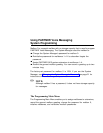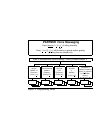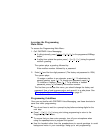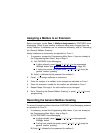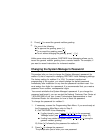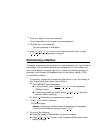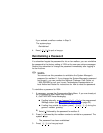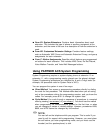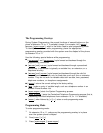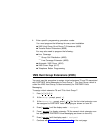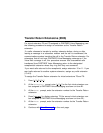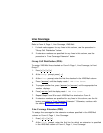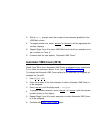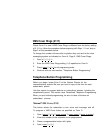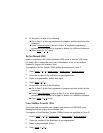
■
■
■
Cycle Method. You cucle through a sequence of procedures in numerical
order by pressing [
Next Procedure
] or [
Prev Procedure
]. You should use this method
when programming the communications system for the first time, or when
you are changing a series of related settings. However, procedures #399,
#609, and #728 cannot be changed by this method.
Form B1: System Extensions. Contains basic information about each
extension. This includes the type of phone or auxiliary equipment at the
extension, and the name of the user or a description of how the extension is
used.
Form B2: Customized Extension Settings. Contains feature settings,
such as Automatic VMS Cover and Automatic Extension Privacy, and group
assignments for each extension.
Form C: Button Assignments. Specifies which features are programmed
on buttons for each extension. This includes VMS Cover, Do Not Disturb,
Voice Mailbox Transfer, and Voice Mail Messages buttons.
Using PARTNER ACS System Programming
System Programming requires a system display phone at extension 10 or
extension 11, with a programming overlay placed over the phone's dialpad.
System Programming procedures are identified by # and a 3-digit code (for
example, the procedure code for System Date is #101).
You can program the system in one of two ways:
■
■
Direct Method. You access a programming procedure directly by dialing
the code for that procedure. This method works best when you are using
only a few procedures during the programming session, and you know the
codes. For example, press #101 to change the system date.
NOTE:
✏
You can talk on the telephone while you program. This is useful if you
need to call for support while programming. However, you must place
the call before you enter programming mode, and you must use the
handset (not the speakerphone) to talk.



